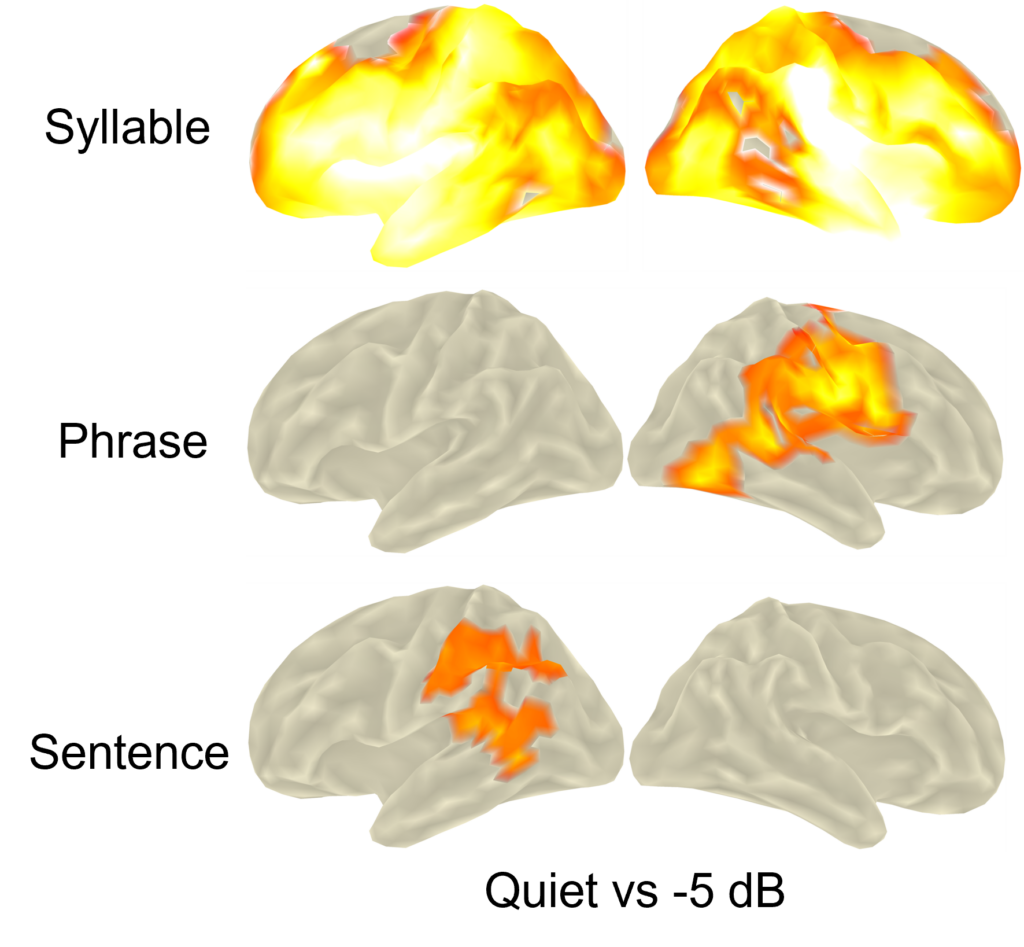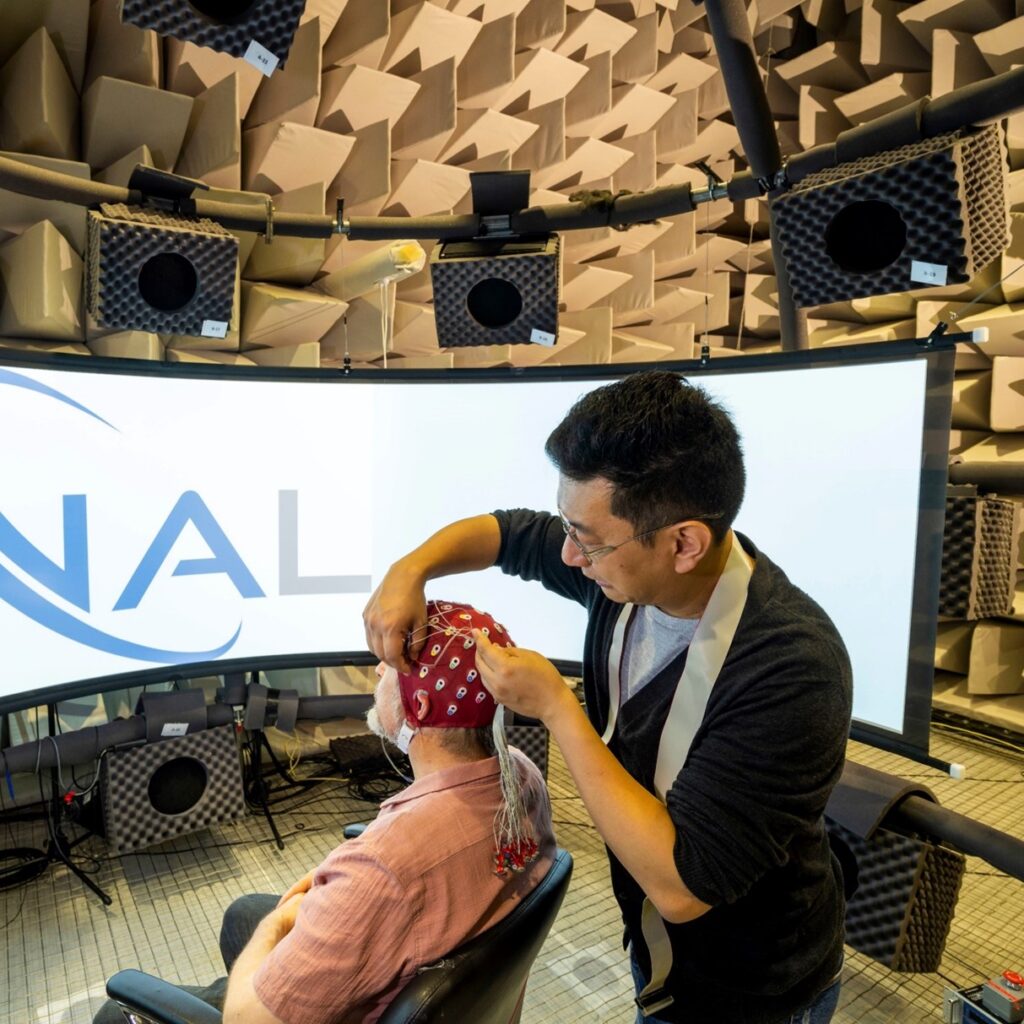Neural tracking as a measure of speech understanding in noise
Project Goals
Evaluation of hearing aids using speech in noise test remains the gold standard in audiometric assessments. Most of these assessments are performed behaviourally, asking patients to recall words in noisy speech. In some situations, patients cannot verbally recall words, objective measures are necessary to check or verify functional performance with hearing aids or cochlear implants. So far, some promising results have been reported in the literature using electrodes positioned on the scalp, known as electroencephalography or EEG. However, the methods reported in the literature use proxies to speech in noise, such as clicks, or simple speech sounds that elicit changes in the brain activity. In this work, we pioneered a method with EEG measures where speech in noise was assessed using naturally spoken English sentences, presented at different levels of background noise.
Results
Participants listened to streams of short English sentences presented with multi-speaker background noise at different sound levels while their brain electric activity was recorded. EEG data collected from 19 normal hearing participants shows:
· Human brain activity follows concrete and abstract regularities embedded in speech sentences with and without background noise.
· This brain tracking activity reduces as level of background noise increases and speech intelligibility decreases.
· Different brain regions are involved to the physical changes in background noise level and perceptual changes in speech intelligibility. The pattern of corresponding changes in brain activity are different too.

Results from this exploratory work are promising, next step of work for the project team is to explore potential opportunities to further validate and develop this method as a clinical tool for hearing aid and Cochlear Implant (CI) evaluations.


